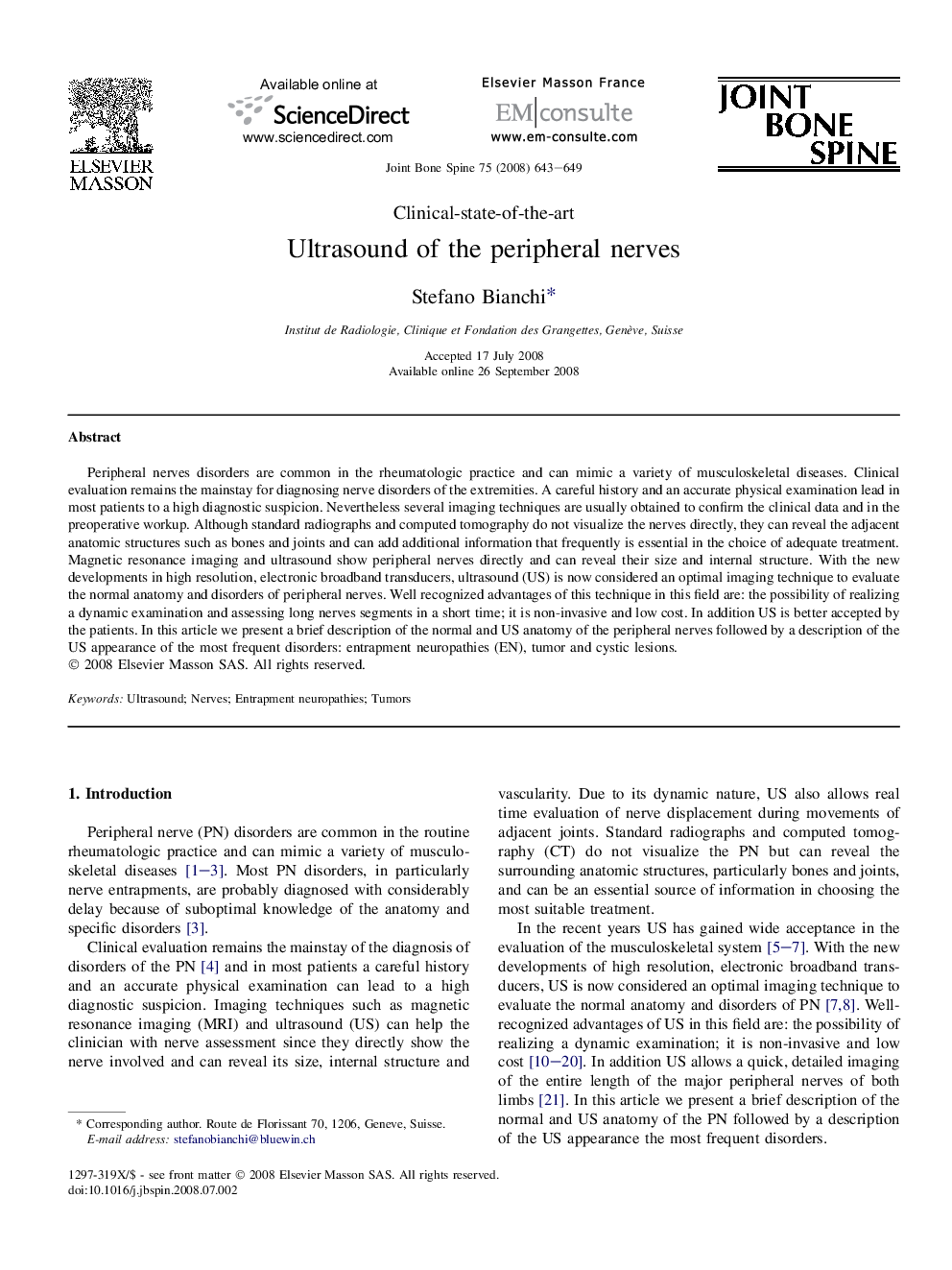| Article ID | Journal | Published Year | Pages | File Type |
|---|---|---|---|---|
| 3367442 | Joint Bone Spine | 2008 | 7 Pages |
Peripheral nerves disorders are common in the rheumatologic practice and can mimic a variety of musculoskeletal diseases. Clinical evaluation remains the mainstay for diagnosing nerve disorders of the extremities. A careful history and an accurate physical examination lead in most patients to a high diagnostic suspicion. Nevertheless several imaging techniques are usually obtained to confirm the clinical data and in the preoperative workup. Although standard radiographs and computed tomography do not visualize the nerves directly, they can reveal the adjacent anatomic structures such as bones and joints and can add additional information that frequently is essential in the choice of adequate treatment. Magnetic resonance imaging and ultrasound show peripheral nerves directly and can reveal their size and internal structure. With the new developments in high resolution, electronic broadband transducers, ultrasound (US) is now considered an optimal imaging technique to evaluate the normal anatomy and disorders of peripheral nerves. Well recognized advantages of this technique in this field are: the possibility of realizing a dynamic examination and assessing long nerves segments in a short time; it is non-invasive and low cost. In addition US is better accepted by the patients. In this article we present a brief description of the normal and US anatomy of the peripheral nerves followed by a description of the US appearance of the most frequent disorders: entrapment neuropathies (EN), tumor and cystic lesions.
